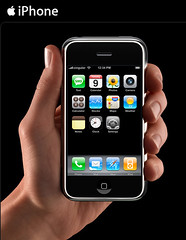
The Trotz household has acquired a brand-new top-of-the-line Sony, their Internet-enabled, Motionflow, Bravia, 1080p, CCFL and generally fully buzzword compliant (sorry, no 3D!) LCD television. This replaces our 2-year old HD set from Sony I blogged about here. Why do you ask? Read on….
So waaaay back in December 2007, the Trotz household entered the world of high-def television when I purchased Sony’s KDS-R50XBR1, their close to top-of-the-line in HD set at the time. I didn’t need a flat screen for my setup, and didn’t want to pay the premium to get a plasma or LCD at the time, and based on tons of research identified this variation of the then very popular DLP set as the ideal solution.
You know this didn’t turn out well.
While I’d specifically chosen the Sony SXRD solution because it didn’t use a color wheel like most DLPs – a mechanical device that would rotate at high speed to project the image onto the screen – it turns out that these SXRDs had a much more significant problem no reviewer at the time could have ever pointed to.
Fast forward to the past year or so – during which, it turns out, my tv was slowly degrading in quality. The so-called ‘yellow stain’ problem overtook much of the display – and was very evident as an after-image for any graphical element that stayed on screen for more than a few seconds. I figured that was just my bulb telling me it needed to be replaced (a feature that Amy really bristled at, but I figured would be worth dealing with). So in some downtime before the holidays, I Googled the topic to see where to find a bulb, and discovered – the lawsuit.
Turns out that the SXRDs are duds. Lemons. Clunkers. All of ’em.
There was a class-action lawsuit against Sony for a core defect in these sets. The so-called ‘optical block’ – the prism through which the image passes to the screen, and one of the single most expensive elements of the hardware degrades over time, and must be replaced every 18 months or so. At a cost of at least $1600. Plus the bulbs, at a cost of $250 or so. For a set that listed at $3500, and sold for $2500, that’s far too much in ‘maintenance’ costs to be acceptable.
The lawsuit is fascinating. It alleges all sorts of intrigue – including certain parties trying to squelch independent research conducted about the frequency of failure (every set tested) and other goodies. Long story short – Sony settled the suit, and agreed to pay for past repairs customers had performed on the optical block – through mid-2009. They offered me, however, a brand new near top-of-the-line set, the KDL52XBR9, for less than 20% of list price, essentially the same cost as if I was changing out the bulb (plus labor) on the old set. It took about one month, even including Christmas and New Years, but the new set is here. Anybody want a yellow-stained 50″ SXRD cheap? It’s gathering dust and taking up room in the playroom now ;-).
The new set is remarkable. It’s got that 240mHz refresh rate, which interpolates frames to give incredible clarity on fast-moving action in sports and movies. It’s also internet-connected, and while painful to enter my login for Yahoo Widgets, being able to pull up my Flickr photos is pretty spiffy. The responsiveness on the web features is pretty slow – but tolerable. It’s got Netflix built-in – may need to re-enable my sub over there, and also has Amazon, NPR, Youtube and a slew of other web features. Of course, I’ve recycled an old laptop to serve as a home theater PC (HTPC), and with the help of a handy DVI-to-HDMI connector, I’m driving that in full 1080p and able to play iTunes and other HD material on the set that looks as good as any blu-ray demos I’ve seen, so I’ll probably use that more often than the built-in web features.
This Google Group is the most comprehensive overview of the SXRD issue and the class action lawsuits. Highly recommended if you are dealing with these problems yourself:
http://sites.google.com/site/sonylcdrptvproblems/sonyrearprojectionlcdtv-opticalblock





 Not mentioned in the Stevenote was the addition of a new
Not mentioned in the Stevenote was the addition of a new